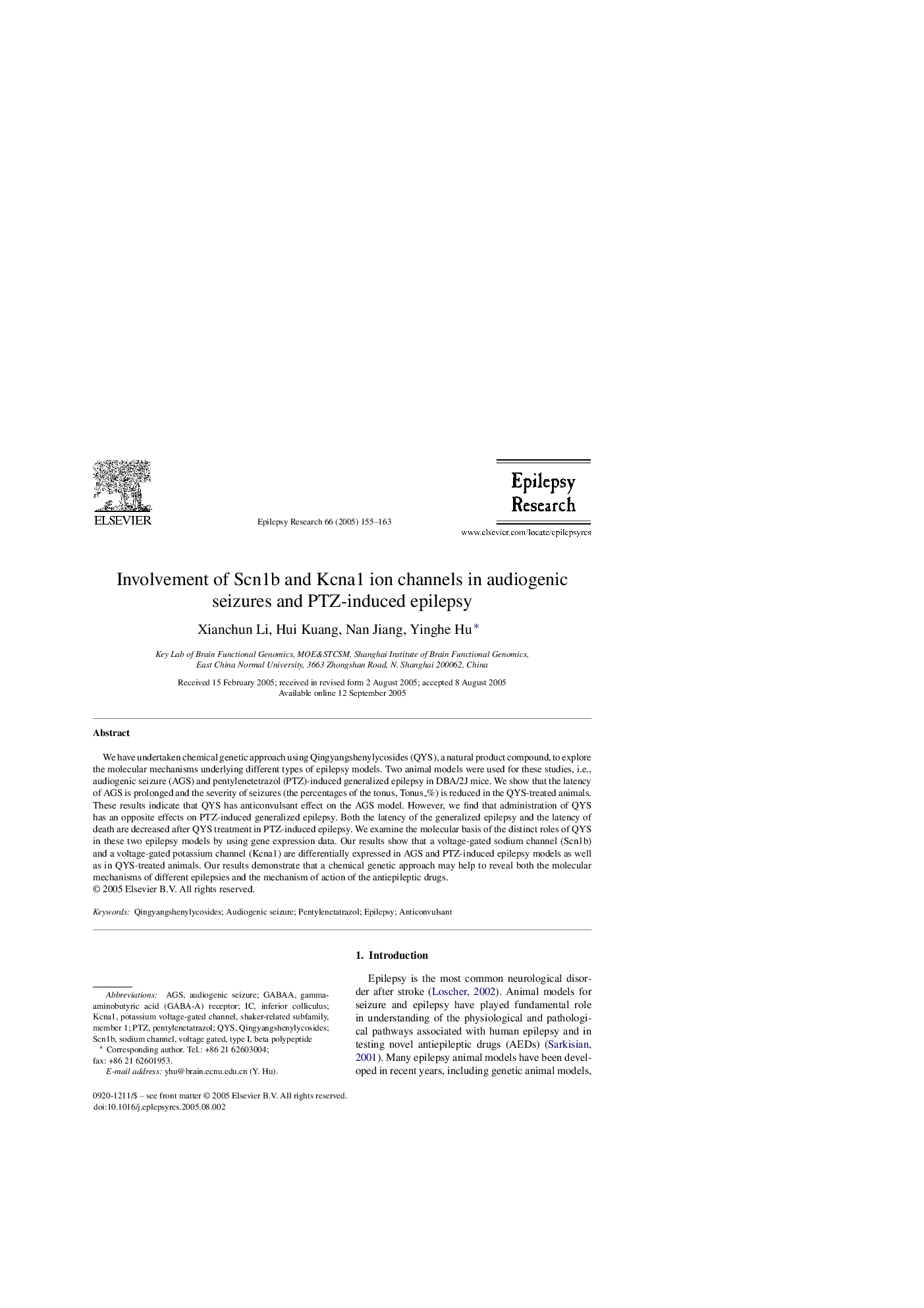| کد مقاله | کد نشریه | سال انتشار | مقاله انگلیسی | نسخه تمام متن |
|---|---|---|---|---|
| 9191201 | 1579955 | 2005 | 9 صفحه PDF | دانلود رایگان |
عنوان انگلیسی مقاله ISI
Involvement of Scn1b and Kcna1 ion channels in audiogenic seizures and PTZ-induced epilepsy
دانلود مقاله + سفارش ترجمه
دانلود مقاله ISI انگلیسی
رایگان برای ایرانیان
کلمات کلیدی
موضوعات مرتبط
علوم زیستی و بیوفناوری
علم عصب شناسی
عصب شناسی
پیش نمایش صفحه اول مقاله

چکیده انگلیسی
We have undertaken chemical genetic approach using Qingyangshenylycosides (QYS), a natural product compound, to explore the molecular mechanisms underlying different types of epilepsy models. Two animal models were used for these studies, i.e., audiogenic seizure (AGS) and pentylenetetrazol (PTZ)-induced generalized epilepsy in DBA/2J mice. We show that the latency of AGS is prolonged and the severity of seizures (the percentages of the tonus, Tonus_%) is reduced in the QYS-treated animals. These results indicate that QYS has anticonvulsant effect on the AGS model. However, we find that administration of QYS has an opposite effects on PTZ-induced generalized epilepsy. Both the latency of the generalized epilepsy and the latency of death are decreased after QYS treatment in PTZ-induced epilepsy. We examine the molecular basis of the distinct roles of QYS in these two epilepsy models by using gene expression data. Our results show that a voltage-gated sodium channel (Scn1b) and a voltage-gated potassium channel (Kcna1) are differentially expressed in AGS and PTZ-induced epilepsy models as well as in QYS-treated animals. Our results demonstrate that a chemical genetic approach may help to reveal both the molecular mechanisms of different epilepsies and the mechanism of action of the antiepileptic drugs.
ناشر
Database: Elsevier - ScienceDirect (ساینس دایرکت)
Journal: Epilepsy Research - Volume 66, Issues 1â3, AugustâSeptember 2005, Pages 155-163
Journal: Epilepsy Research - Volume 66, Issues 1â3, AugustâSeptember 2005, Pages 155-163
نویسندگان
Xianchun Li, Hui Kuang, Nan Jiang, Yinghe Hu,